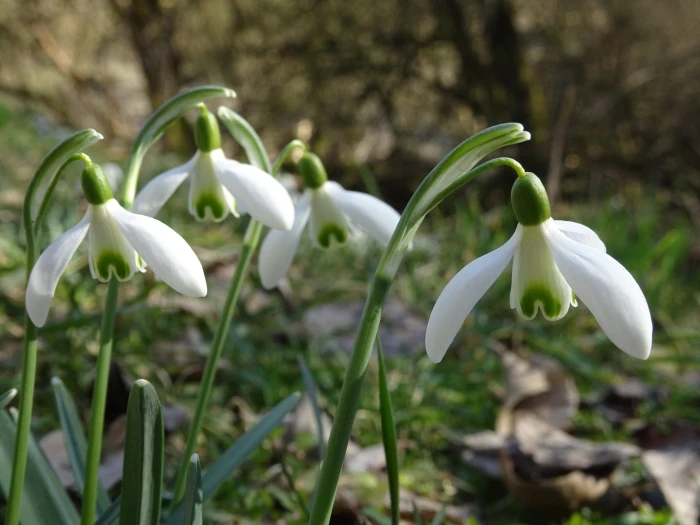Snowdrop
(Galanthus nivalis)
Snowdrop (Galanthus nivalis)
/
/

By Robert H. Wardell no rights reserved
Public Domain


















































Estimated Native Range
Climate Requirements for Mandeville, Louisiana
| This Plant | Your Site | Plant Suitability for Your Location | ||
|---|---|---|---|---|
| • Precipitation | 4" - 127" | 63" | Aquatic | Aquatic |
| • High Temp. | 55°F - 94°F | 92°F | Your summer temperatures are normal for this plant. | Excellent |
| • Low Temp. | -2°F - 46°F | 40°F | Your winter temperatures are normal for this plant | Excellent |
Summary
The snowdrop reaches a modest height of 7–15 cm and blooms from January to April in the northern temperate zone. Its flowers are solitary, pendulous, and bell-shaped, with three outer petals curved to form a sphere around the smaller inner petals, which are usually marked with a green or greenish-yellow V- or U-shaped mark. The foliage consists of two linear leaves that appear with or shortly before the flowers. Snowdrops are valued for their delicate, nodding white flowers that signal the end of winter and are often used in rock gardens, woodland plantings, and borders. They are relatively low-maintenance, requiring only consistent moisture during their growing season and a period of dryness during their summer dormancy. While generally pest-free, snowdrops can be susceptible to gray mold (Botrytis) in wet conditions.
Popular cultivars include ’Flore Pleno’ with double flowers, and ’Viridapice’ with green-tipped petals. Snowdrops can multiply and naturalize over time, but they are not typically invasive. However, they should be planted with care as they can be toxic if ingested and can cause skin irritation.CC BY-SA 4.0
Plant Description
- Plant Type: Herb
- Height: 0.5-0.8 feet
- Width: 0.3-0.5 feet
- Growth Rate: Moderate
- Flower Color: White
- Flowering Season: Winter, Spring
- Leaf Retention: Deciduous
Growth Requirements
- Sun: Full Sun, Part Shade
- Water: Medium
- Drainage: Medium, Fast
Common Uses
Bank Stabilization, Bee Garden, Border Plant, Deer Resistant, Fragrant, Low Maintenance, Rabbit Resistant, Rock Garden, Showy Flowers, Street Planting
Natural Habitat
native to a wide swath of Europe, from the Pyrenees in the west, through France and Germany, and into Poland and Ukraine, it is also found in the Caucasus and northern Iran
Other Names
Common Names: Common Snowdrop, Snowdrops, Snow Piercer, Mary’s Taper, February Fairmaids, Candlemas Bells, Candlemas Lily, Common Bells, Vintergæk, Kleines Schneeglöckchen
Scientific Names: Galanthus nivalis, Galanthus nivalis var. nivalis, Galanthus nivalis var. scharlockii, Galanthus nivalis f. pleniflorus, Galanthus imperati, Galanthus scharlokii, Galanthus nivalis subsp. imperati, Galanthus nivalis var. majus, Galanthus nivalis var. montanus
GBIF Accepted Name: Galanthus nivalis L.